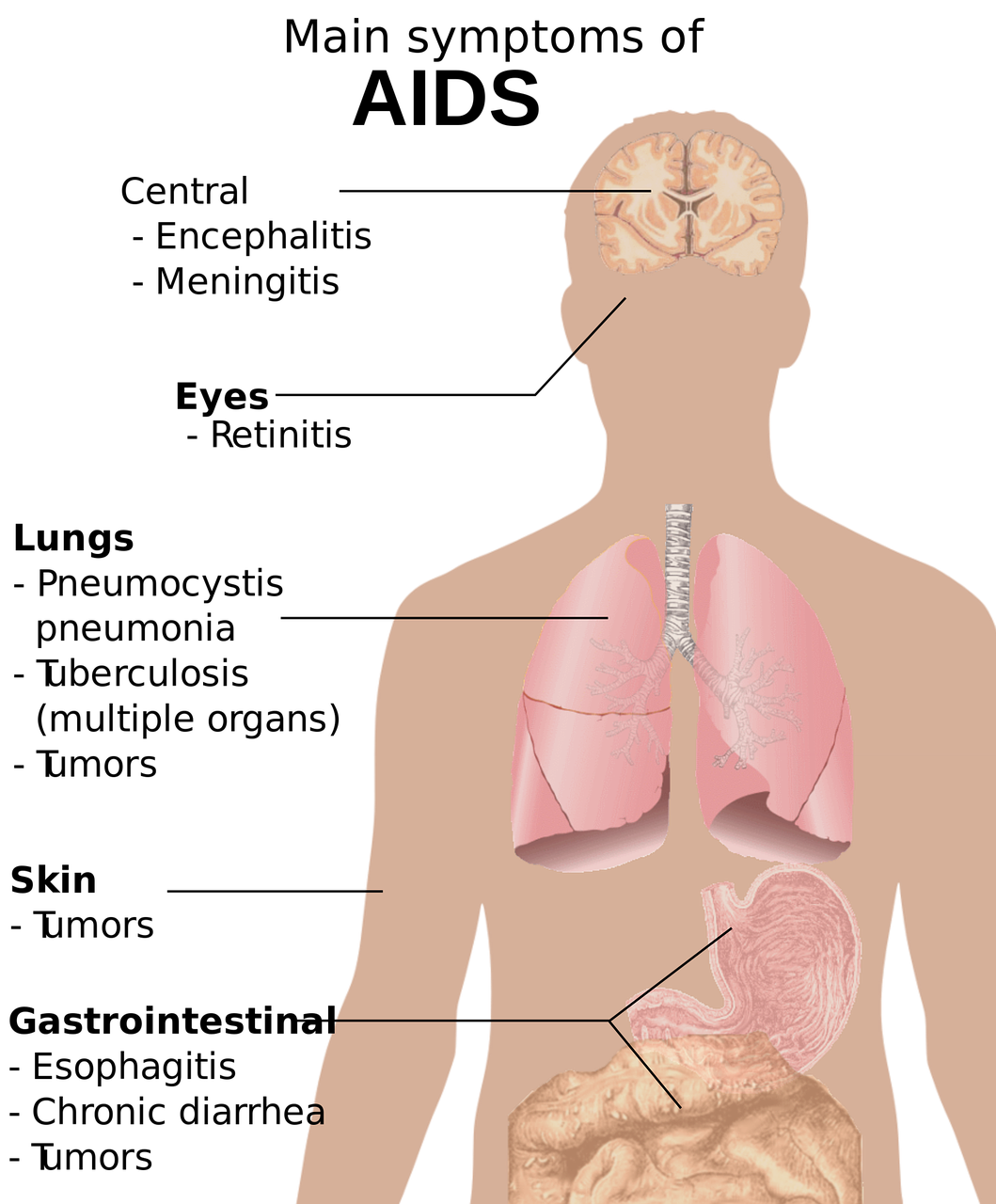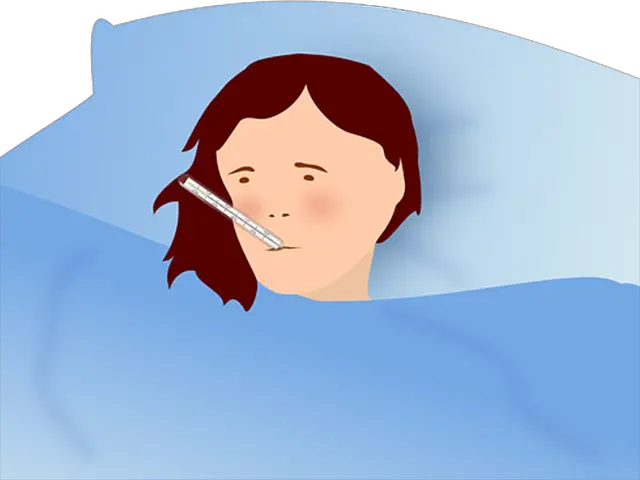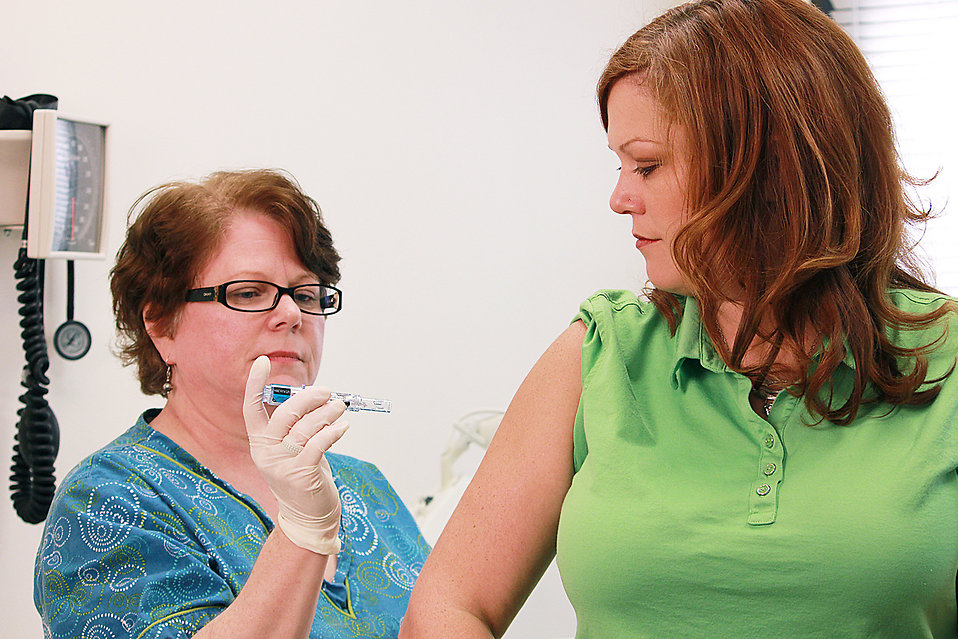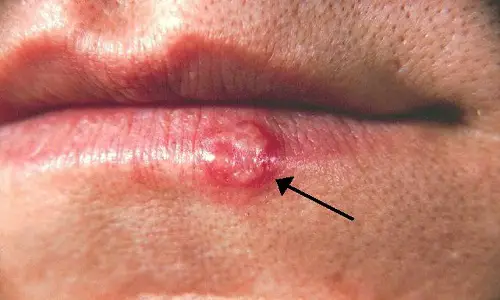
Acquired immune deficiency syndrome (AIDS) refers to the symptoms associated with infection by the human immunodeficiency virus (HIV). HIV targets cells of the immune system leading to its eventual loss, opening the infected individual up to other infections.
Upon initial infection the individual may experience flu like symptoms which last for a few weeks, which is often termed the acute phase. During this phase the individual’s immune system is fighting the infection, resulting in the flu like symptoms, and is highly contagious.
Following this the symptoms disappear and the infected individual enters a phase known as clinical latency. They are still infected with HIV and are still infectious, the virus is just reproducing at low levels. In those who are unaware they have been infected this stage can last up to 10 years, but can often progress much more quickly. If aware, and the correct medication is taken this period can be extended out to several decades. In this stage although the individual is infected with HIV they are not diagnosed as having AIDS.
Following this stage of clinical latency, and as the number of immune cells declines below a critical threshold AIDS is diagnosed. With a greatly weakened immune system an infected individual is open to an increasing number of severe, opportunistic infections. In a healthy individual these would be cleared by the immune system; however, in an individual with AIDS they are not cleared and can linger and spread throughout the body. The symptoms of AIDS include chills, fever, weakness, weight loss and swollen glands which are the signs of rampant infections within the body. Eventually the number and severity of infections becomes too great and the individual dies. Typically, the time from diagnosis with AIDS to death is three years, although this can be slightly extended with intensive care. There is no current cure for HIV infection or AIDS.
Myth 1 – You can catch HIV by touching an infected person.
HIV is spread through some bodily fluids, namely blood, semen, vaginal fluids or breast milk. Other bodily fluids such as saliva, tears, sweat, urine, vomit or feces are not infectious, unless they are contaminated with blood. HIV is therefore typically spread by unprotected sex, by blood to blood transfer (such as when sharing needles to inject drugs) or from mother to child.
So you cannot catch HIV by breathing the same air as an infected person, shaking hands, kissing, or sharing food or utensils.
Myth 2 – You don’t need to worry about HIV anymore, the drugs will keep me healthy.
Whilst many new drugs have been developed to combat HIV they are not cures. They can very effectively extend the clinical latent period of infection before the diagnosis of AIDS but they cannot clear it completely. Recently, resistant strains of HIV are being detected making treatment more challenging1. Additionally, whilst the drugs do work they are very expensive and associated with several side effects.
Myth 3 – I’ve been infected with HIV my life is over.
Whilst the available drugs cannot cure HIV infection they do allow infected individuals to live much longer, healthier, normal and productive lives than when the disease first appeared. Early diagnosis and treatment are key in extending the clinical latent period, and also in informing and counselling individuals about what the diagnosis actually means for them and their family and friends.
Myth 4 – Only homosexuals get HIV/AIDS.
Whilst the majority of men are infected with HIV through homosexual sex, a large proportion are not. In women, the majority of infections arise through heterosexual sex and infected women are also likely to pass on the disease to any children. The myth arose due to the initially high numbers of homosexual men with the disease when it first appeared, leading some to term it a “gay disease”, although it was rapidly realised that this was not in fact true
Myth 5 – If you have sex with someone with HIV, you will catch HIV.
Whilst HIV is commonly spread through semen or vaginal fluid contact with infected bodily fluids does not guarantee infection. Indeed, the rates of infection from unprotected sex vary from 0 to 3%2. The infectivity of an individual with HIV can vary dramatically through the course of the disease. During the acute starting phase, or end-stage AIDS they are highly infective, during the latent period this infectivity drops, and drops further still if they are receiving treatment.
This is not to say that protection shouldn’t be taken, only that the risk is decreased in the latent phase. It is very important if you think you have been in contact with someone with HIV that you get yourself checked as soon as possible.












Leave a Reply